Related Research Articles

Longman, also known as Pearson Longman, is a publishing company founded in London, England, in 1724 and is owned by Pearson PLC.
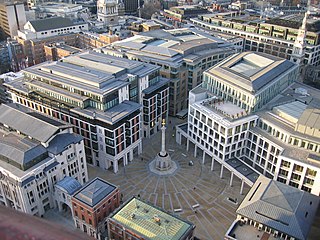
Paternoster Square is an urban development, owned by the Mitsubishi Estate Co., next to St Paul's Cathedral in the City of London. The area, which takes its name from Paternoster Row, once centre of the London publishing trade, was devastated by aerial bombardment in The Blitz during the Second World War. It is now the location of the London Stock Exchange which relocated there from Threadneedle Street in 2004. It is also the location of investment banks such as Goldman Sachs, Merrill Lynch and Nomura Securities Co., and of fund manager Fidelity Investments. The square itself, i.e. the plaza, is privately owned public space. In 2004, Christopher Wren's 1669 Temple Bar Gate was re-erected here as an entrance way to the plaza.
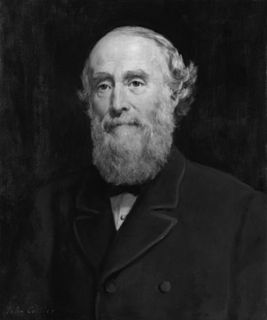
Sir George Williams was an English philanthropist, businessman and founder of the Young Men's Christian Association (YMCA). The oldest and largest youth charity in the world, its aim is to support young people to belong, contribute and thrive in their communities.

Sir George Newnes, 1st Baronet was an English publisher and editor and a founding father of popular journalism. His company, George Newnes Ltd, continued publishing ground-breaking consumer magazines such as Nova long after his death.
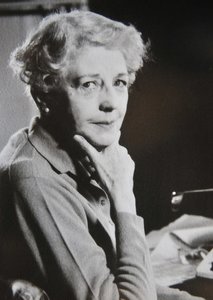
Norah Lofts, néeNorah Ethel Robinson, was a 20th-century best-selling British author. She wrote more than fifty books specialising in historical fiction, but she also wrote non-fiction and short stories. Many of her novels, including her Suffolk Trilogy, follow the history of specific houses and their residents over several generations.

Hodder & Stoughton is a British publishing house, now an imprint of Hachette.
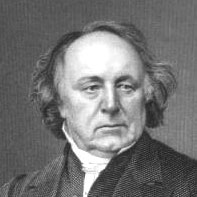
The Rev. Dr. Thomas Binney (1798–1874) was an English Congregationalist divine of the 19th century, popularly known as the 'Archbishop of Nonconformity'. He was noted for sermons and writings in defence of the principles of Nonconformity, for devotional verse, and for involvement in the cause of anti-slavery.
Robert Tillman Kendall is a Christian writer, speaker, and teacher who pastored Westminster Chapel for 25 years. He is author of more than 50 books, including Total Forgiveness. Kendall is currently listed as part of the Word, Spirit & Power team, a non-denominational Charismatic ministry.

Paternoster Press is a British Christian publishing house which was founded by B. Howard Mudditt (1906–1992) in 1936. Mudditt was a Bank of England clerk who decided to move into publishing after seeing the many publishers based on London's Paternoster Row during his lunch hours; the firm was named after the street, and also alluded to the Lord's Prayer. The Irish Times described Paternoster as "a synonym for scholarly, evangelical Christian publications."
Ian Howard Marshall was a Scottish New Testament scholar. He was Professor Emeritus of New Testament Exegesis at the University of Aberdeen, Scotland. He was formerly the chair of the Tyndale Fellowship for Biblical and Theological Research; he was also president of the British New Testament Society and chair of the Fellowship of European Evangelical Theologians. Marshall identified as an Evangelical Methodist. He was the author of numerous publications, including 2005 Gold Medallion Book Award winner New Testament Theology.
Thomas Fisher Unwin (1848–1935) was an English publisher who founded the publishing house of T. Fisher Unwin.
Edward Arnold Publishers Ltd was a British publishing house with its head office in London. The firm had published books for over 100 years. It was acquired by Hodder & Stoughton in 1987 and became part of the Hodder Education group in 2001. In 2006, Hodder Arnold sold its academic journals to SAGE Publications. In 2012, Hodder Education sold its medical and higher education lines, including Arnold, to Taylor & Francis. Edward Arnold published books and journals for students, academics and professionals.

Paternoster Row was a street in the City of London that was a centre of the London publishing trade, with booksellers operating from the street. Paternoster Row was described as "almost synonymous" with the book trade. It was part of an area also called St Paul's Churchyard.
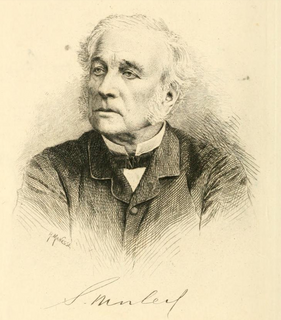
Samuel Morley , was an English woollen manufacturer and political radical. He is known as a philanthropist, Congregationalist dissenter, abolitionist, and statesman.
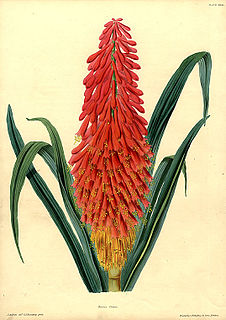
James Andrews (1801–1876) was an English draughtsman, botanical painter and illustrator noted for his accomplished illustrations. He also taught flower-painting to young ladies. He created the illustrations for the famous nature writer Sarah Bowdich Lee's 1854 book Trees, Plants, and Flowers: Their Beauties, Uses, and Influences.

A public school in England and Wales is a fee-charging endowed school originally for older boys which was "public" in the sense of being open to pupils irrespective of locality, denomination or paternal trade or profession. The term was formalised by the Public Schools Act 1868, which put into law most recommendations of the 1864 Clarendon Report. Nine prestigious schools were considered by Clarendon, and seven subsequently included in the Act.

Ward & Co. was a London-based stained glass manufacturer in the mid-nineteenth-century that predominantly focused on ecclesiastical commissions. It was the firm of choice for architect John Tarring of London. It is believed to have become defunct before 1863 and operated out of 27 Paternoster Row, London.
Francis Newbery (1743–1818) was an English publisher and businessman.

Paternoster, also known as Shepherd and Sheep or Shepherd with his Flock, is an outdoor 1975 bronze sculpture by Elisabeth Frink, installed in Paternoster Square near St Paul's Cathedral in London, United Kingdom.
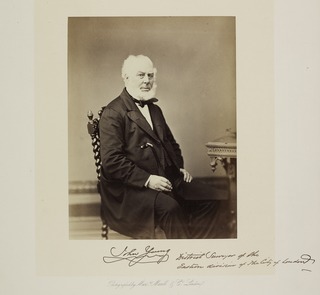
John Young was an English architect and surveyor whose career spanned the grace of the Regency period and the pragmatism of the Industrial Revolution. While based primarily in the City of London, his practice, John Young & Son, Architects, was both eclectic and wide-ranging in South East England. He is particularly noted for his creative use of polychromatic brickwork whether in industrial, civic or residential contexts.
References
- ↑ The Congregational Year Book for 1850, with an Almanac for 1851, Containing the Proceedings of the Congregational Union of England and Wales, and the Confederated Societies for that Year. Together with Supplementary Information, Respecting the Associations, Ministers, New Chapels, Schools, and Publications, of the Congregational Body Throughout the United Kingdom. (London: Jackson and Walford, 18 St Paul’s Churchyard, 1851).
- Attenborough, John. A Living Memory: Hodder and Stoughton 1868-1975. London: Hodder and Stoughton, 1975.
- Bennett, Bryan, and Anthony Hamilton. Edward Arnold: 100 Years of Publishing. Illustrated with black and white plates, including a frontispiece of Edward Arnold. London: Edward Arnold (A Division of Hodder & Stoughton), 1990. ISBN 0-340-54109-1